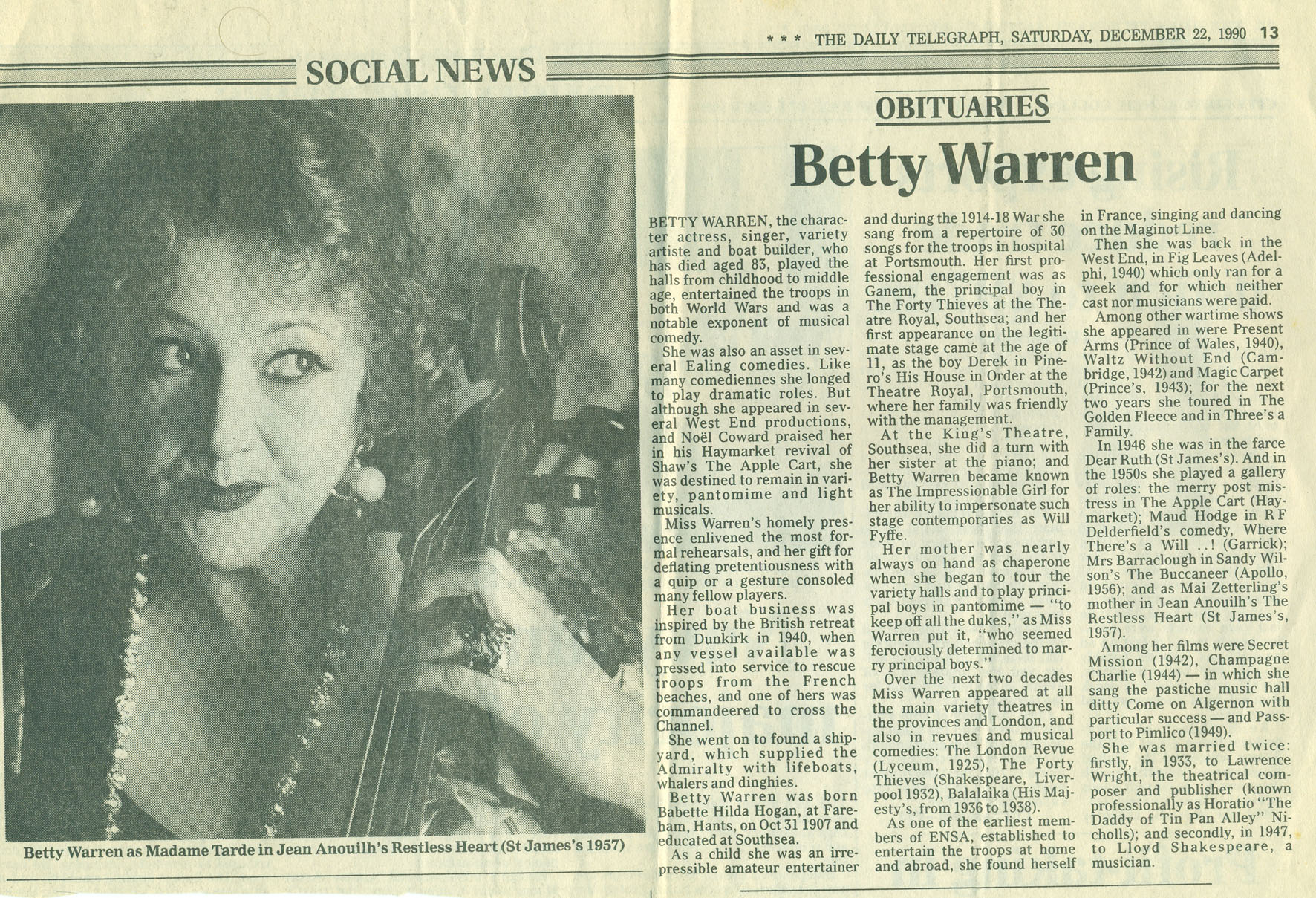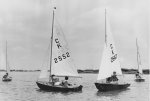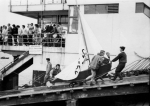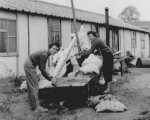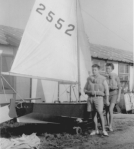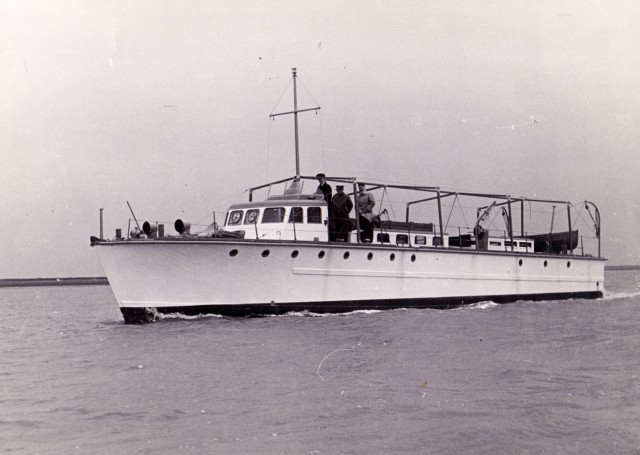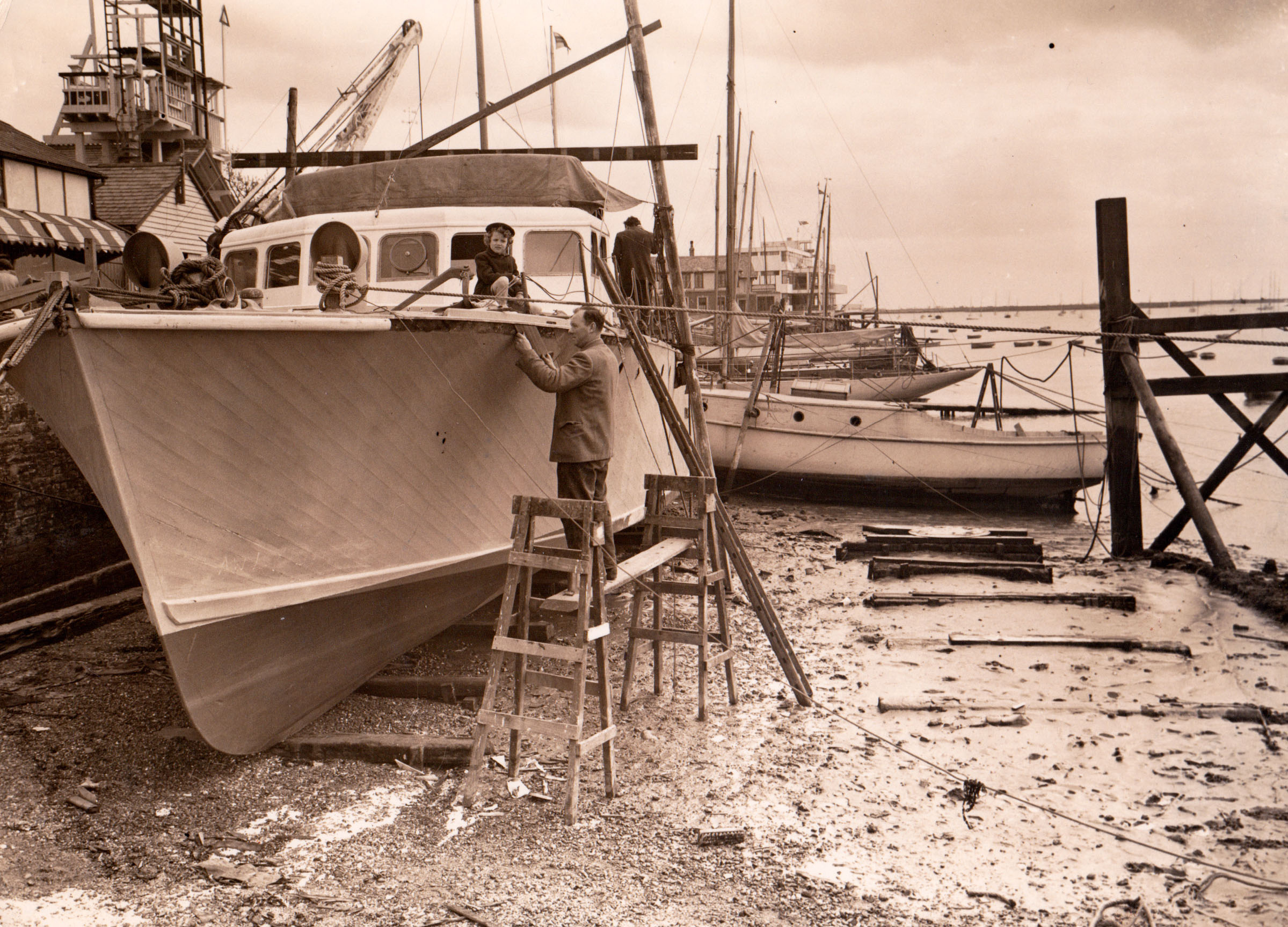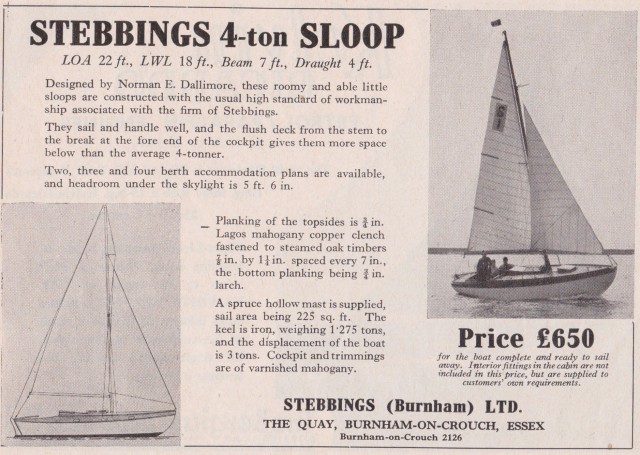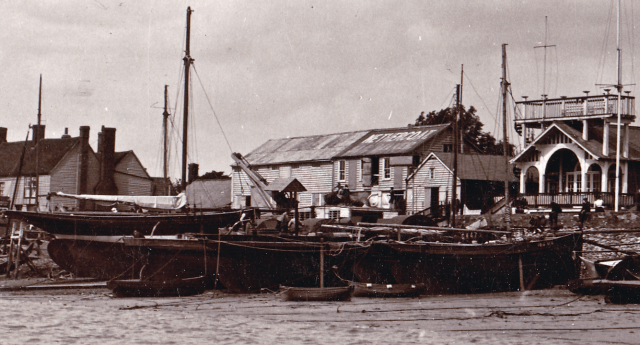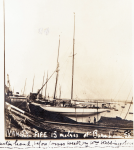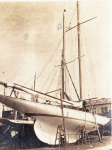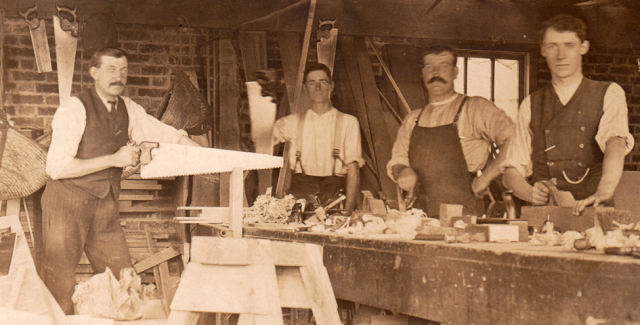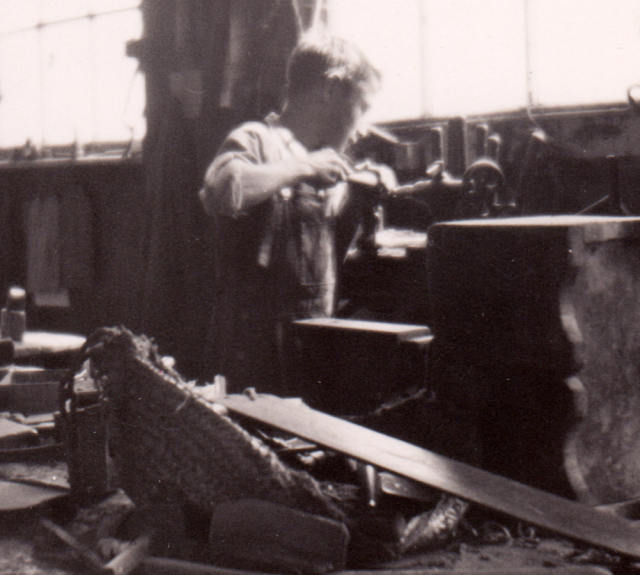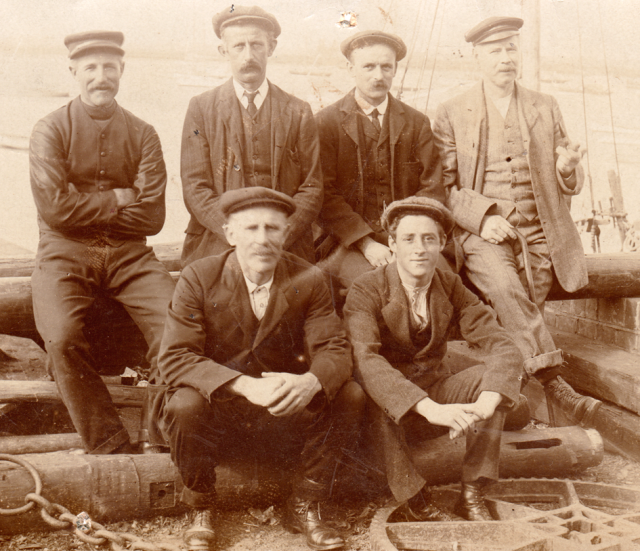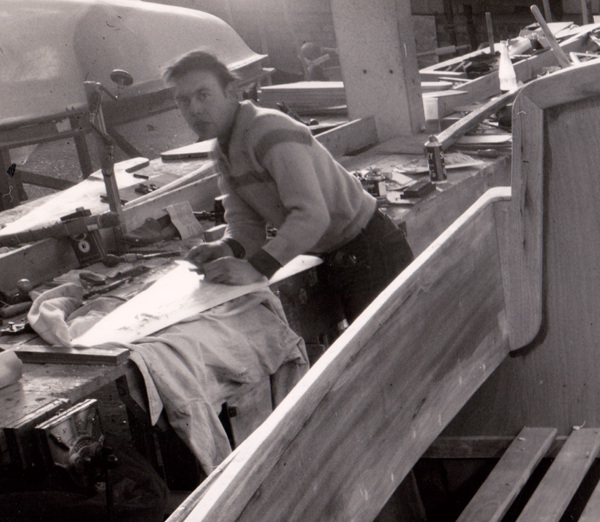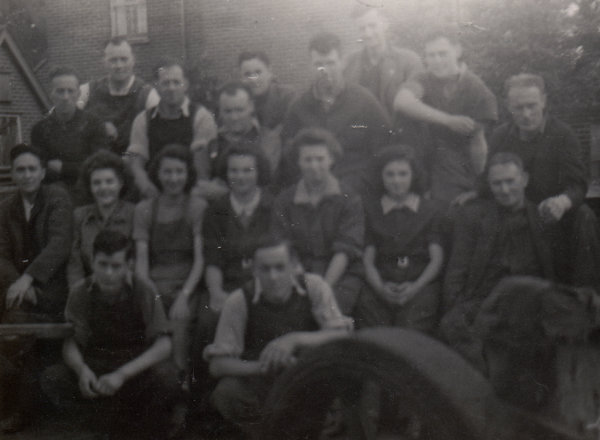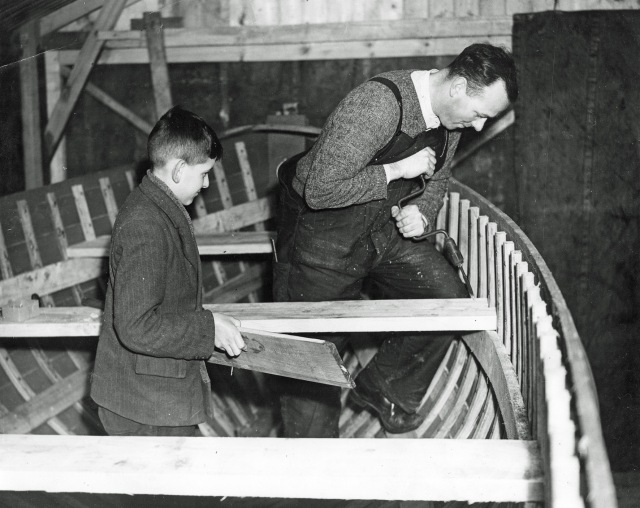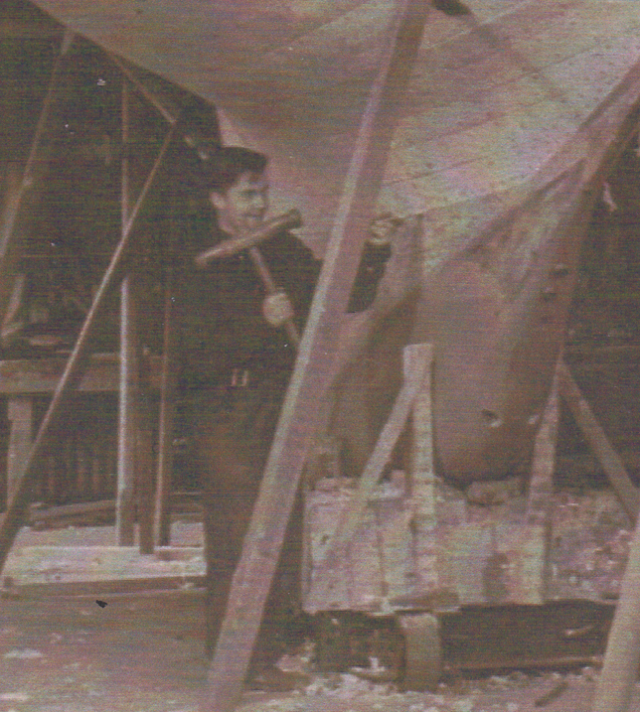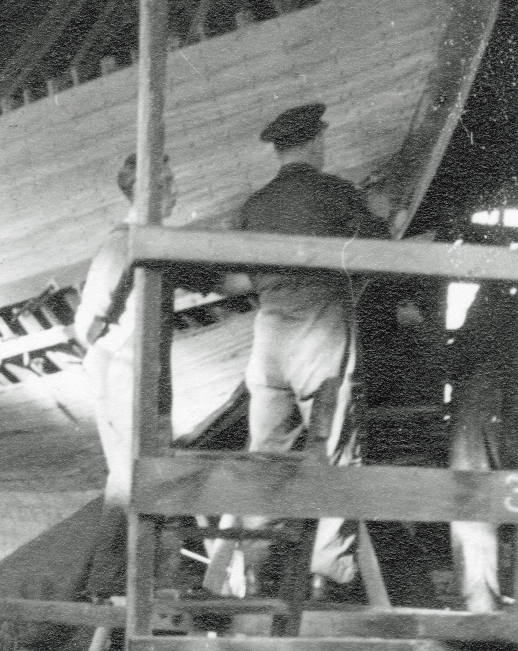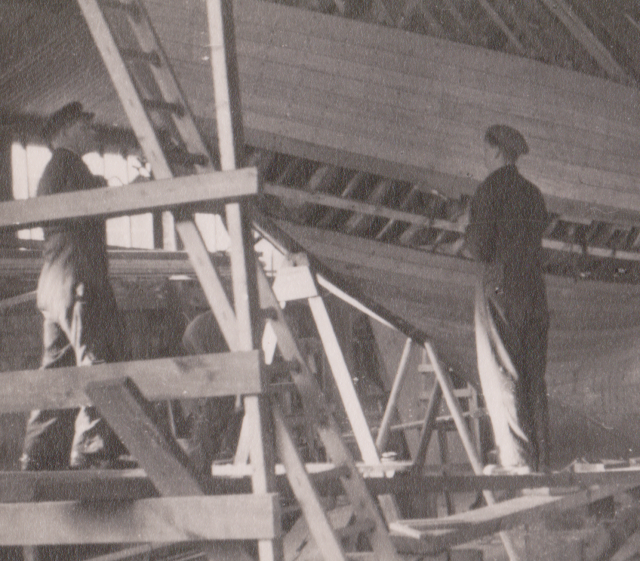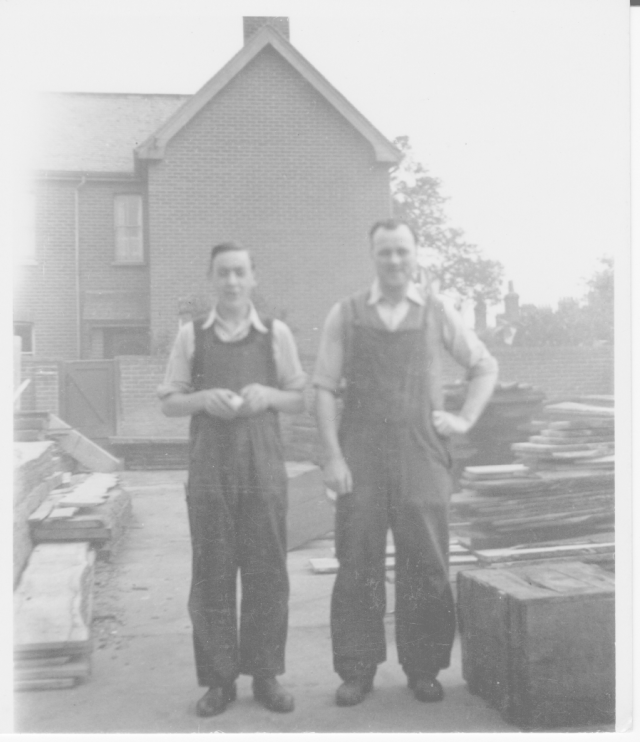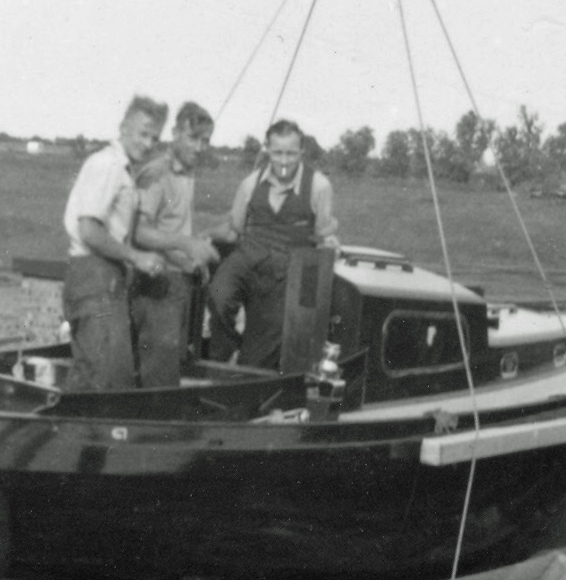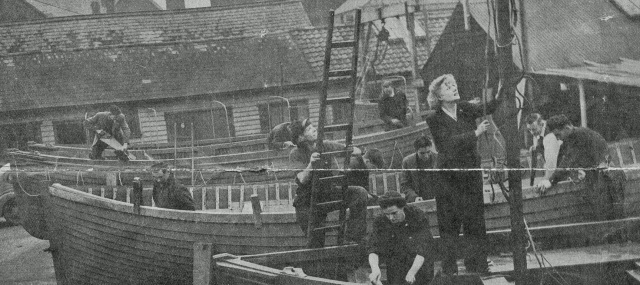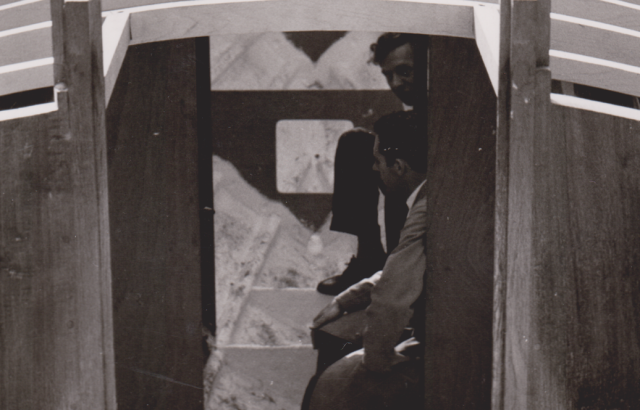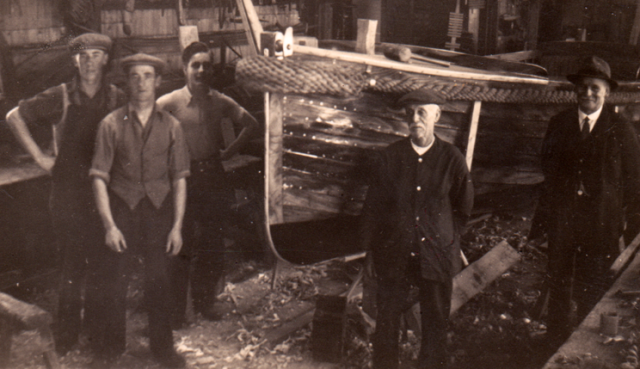Betty Warren and her partner Lloyd Shakespeare bought the Stebbings business from the Stebbings family around 1942. I’m still piecing together the story, but I am uploading photos and newspaper snippets (see below) for others who may be interested.
Betty Warren was the professional name of Babette Hilda Hogan, born on October 31, 1907 in Fareham, Hampshire, England. She died on December 15 1990 in Yeovil, Somerset, England.
This first picture and article is from Shipyard Spotlight, January 1943. This pamphlet was produced by the Admiralty and circulated to boatyards, that were interested, for sale to their employees – price one penny.
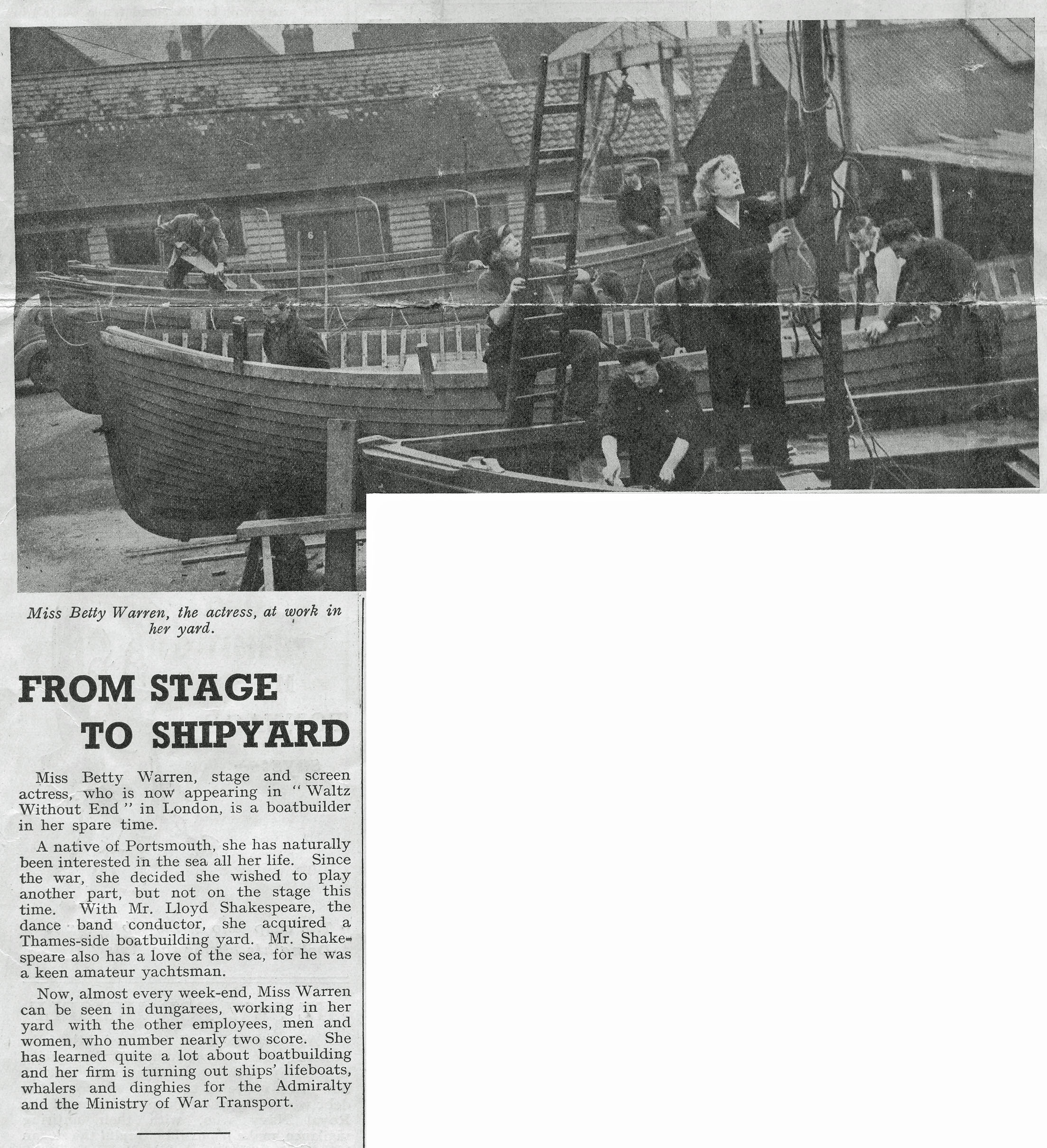
I also have this photo of Betty breaking a bottle of champagne over the bow of a new yacht. I don’t know the name of the boat, unfortunately. I’m also not 100% sure this is Betty Warren, but there is a very strong likeness to the photo in Shipyard Spotlight.
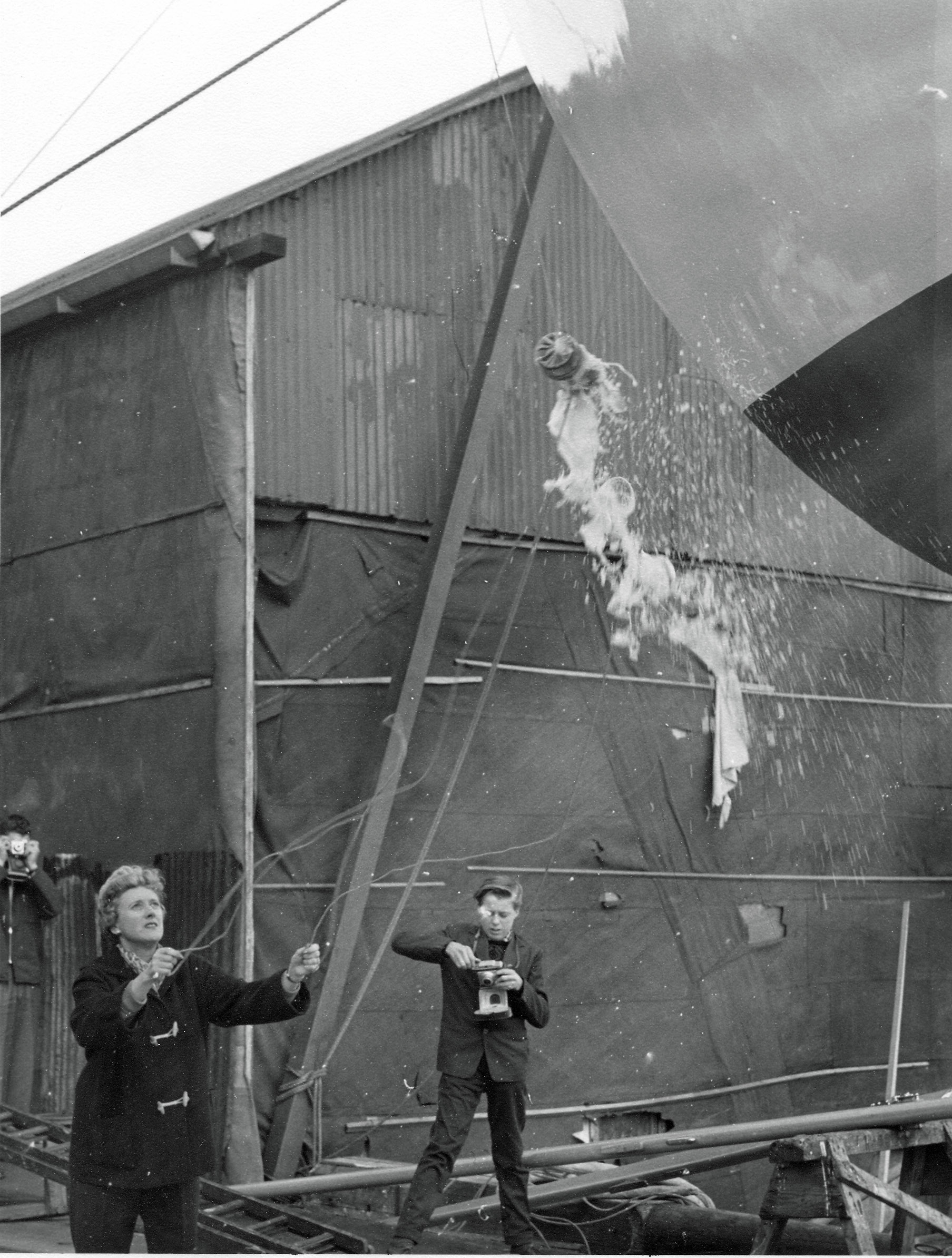
Lloyd Shakespeare, a trumpet virtuoso, was born on 6 June 1895 in Leytonstone, London. He led his own bands during the twenties, recording for the Edison Bell Winner, Parlophone and Piccadilly labels and became a top session and side man with many of the great bands of the 30’s, under amongst others, Lew Stone, Arthur Lally, Jack Harris, Sydney Lipton, Ronnie Munro, and Cecil Norman. He died in 1963.
Here is a scan of an advertising leaflet that I have.
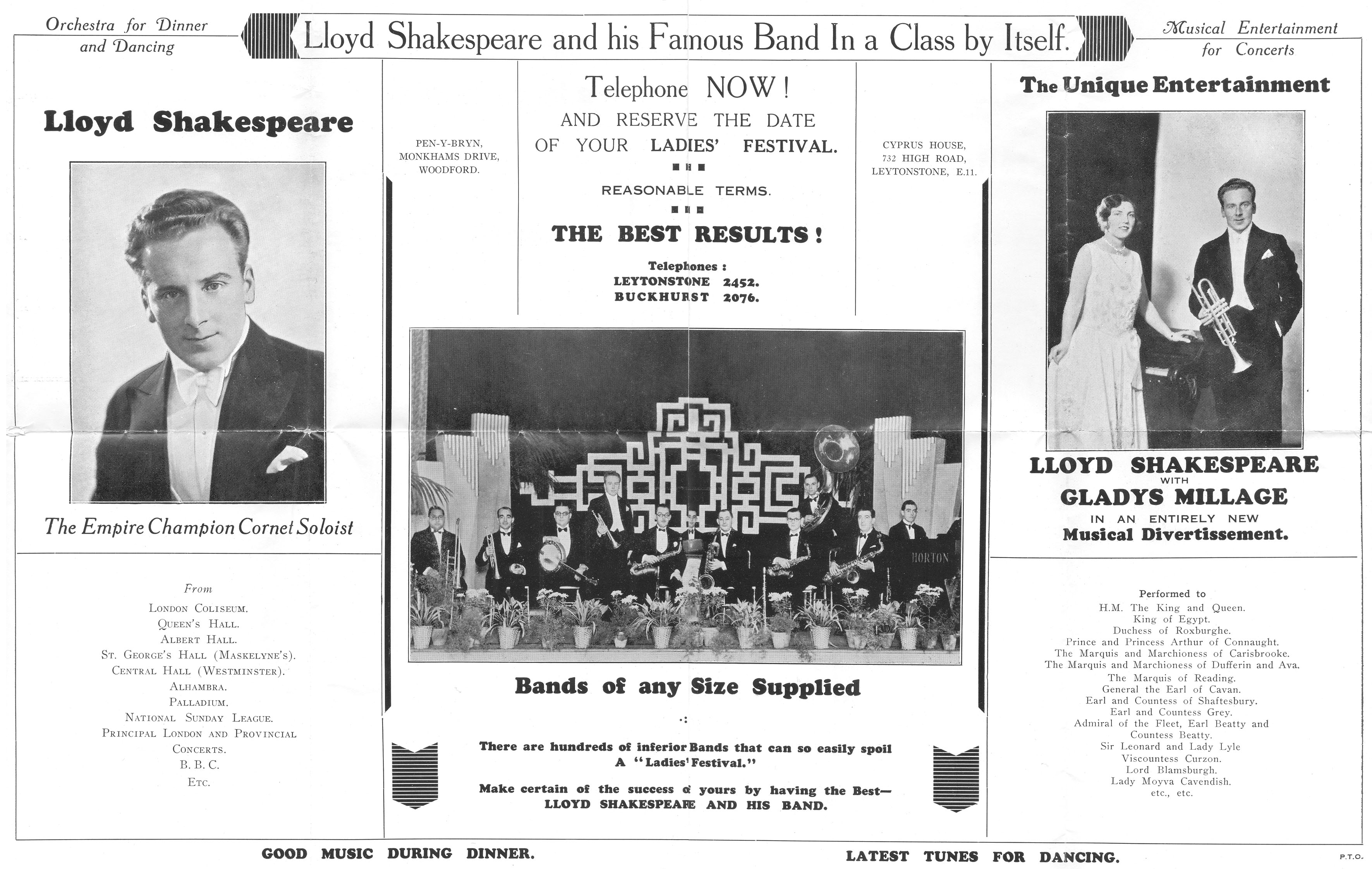
There ae various newspaper cuttings from Betty Warren’s time as a resident of Burnham. Here are a couple of examples from the Essex Newsman (first from 19 Nov 1948 and the second from 13 Oct 1944.
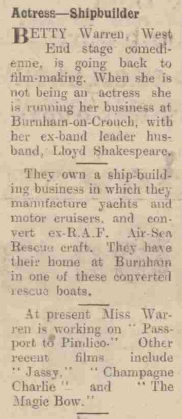

An obituary for Betty Warren appeared in the Daily Telegraph.
